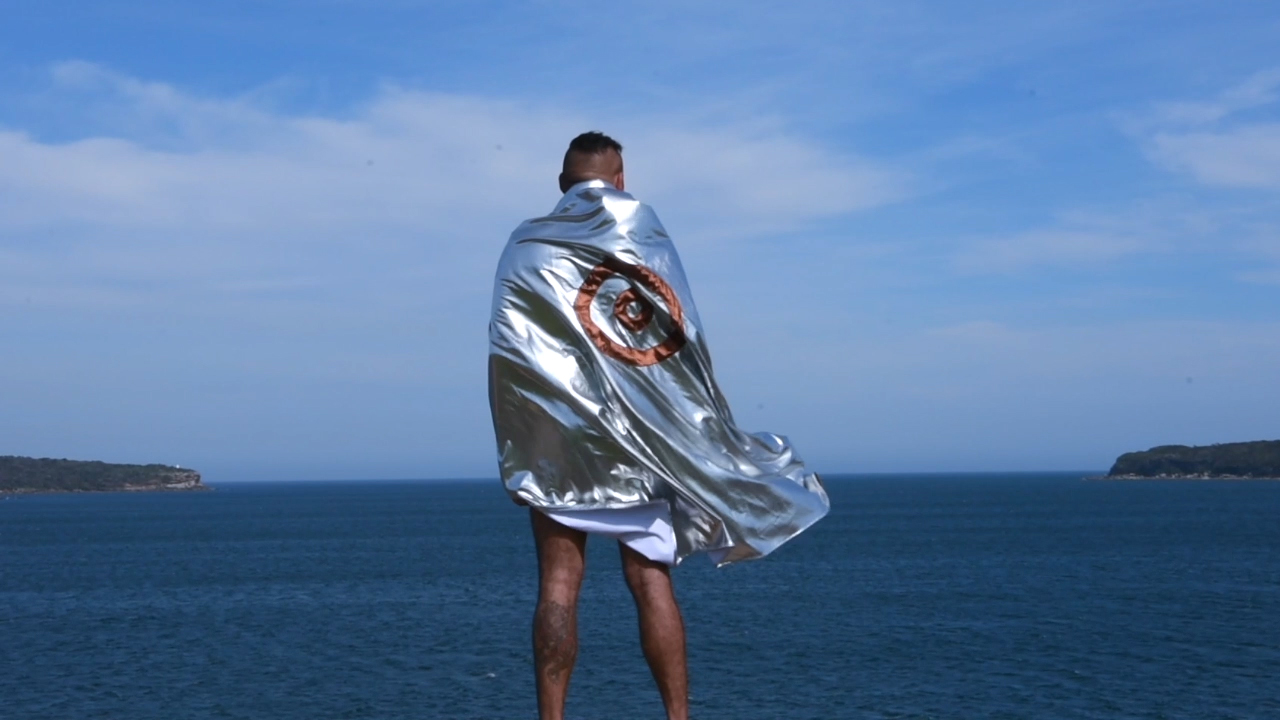At the heart of all creative work is that tender, painstaking and ultimately necessary thing: process. Every artist has a distinct relationship with it, guided by legacy, dream, or presence to work from the best suited places of ourselves and our world. I was reminded of the peculiar role of process when visiting the Hatched National Graduate Show 2019, where the works of eighteen recent graduates filled both floors of the Perth Institute of Contemporary Art (PICA) gallery spaces with honest interrogations of the tensions and intimacies at play in contemporary life.
Edith Cowan University graduate Ómra Caoimhe engaged with the practice of knitting to create delicate textile forms suspended in arrangement with solid found objects. In conversation with Caoimhe at the Hatched opening night event, they shared that this process of creating unambiguous conversation with stitches is part of a greater trajectory in their artmaking directed toward more embodied personal works. In Victorian College of the Arts graduate Carmen-Sibha Keiso’s Love & Fascism in the 21st Century, a process of seeking authenticity was realised through a feature-length, collaborative essay-film, which dismantled rhetoric of methodology and modern theatre with monologue and meta interrogations of performativity. North Metropolitan TAFE graduate William Kitely detached the performance of masculinity from masc bodies and distilled this into vulnerable concrete and found material sculptures in Working Cast, while Queensland University of Technology graduate Anna Litwinowicz reduced natural environments to mesmerising psychedelic visuals in Event Horizon and Void II.
Anita Cummins, Monash University graduate and winner of the prestigious Schenberg Art Fellowship 2019, crafted two works from the process of consuming Cheezels as a coping strategy when living with mental illness. I got out of bed today, a rarefaction-like depiction of the body in slowness made from a significant collection of empty Cheezels boxes Cummins had consumed herself, and feelings, a compact floor covering of crushed Cheezels, both exist in the gallery space as at once notional works built on a dense foundation of emotion. Another Monash University graduate, Yvette James, also worked with emotion but as an access point, the result being an irruption of the conceptually sleek veneer of a metal floored room with surreal sensibilities of danger and embodiment.
Dennis Golding, University of New South Wales graduate and PICA artist-in-residence across the Hatched exhibition period, utilised the pop-cultural symbol of a superhero cape to interrogate power and place in the settler-state of Australia. His video work Empowering Identity (pictured) inhabited a space of subverted narrative surrounding Indigenous and non-Indigenous associations with land and water on Eora country, whereas Illustrated Cape embraced Golding’s childhood memories and life on and off country as a colourful web of the self, embodied as a bold and joyous textile piece.
Australian National University graduate Louis Grant’s two sets of glass panes emerged from a process of stripping back extroversions of queer authenticity to discover a middle ground with internal experiences of validation. The resulting works are an intimate declaration of imperfection and brilliance, with a similar stillness to ECU graduate Stephanie De Biasi’s explorations of the intricacies of the ordinary, in which the artist juxtaposed readymade materials with handmade moulded versions of disposable objects.
Hatched 2019 is an invaluable opportunity for the artists involved, seventeen of whom spent time at PICA over the past week installing and presenting their works. Their determined and theoretically meticulous processes have been successfully curated into a show we are lucky to be able to see in Perth. All of their works moved, challenged, and ultimately excited me with their rigour and intricacy, and I will be keeping my eyes peeled for where their practices take them next.
Hatched will be showing at PICA until July 7.
Words by Patrick Gunasekera
Image Description: a video still of a coastal horizon during the day. The sky is bright blue and overcast with clouds, and the ocean is choppy and Prussian blue. Two green headlands are seen side-on on either side of the image. In the middle of the image between the cliffs of the two headlands and in the foreground, a young person with a short fade haircut and a dark tattoo on their left calf stands with their back to the camera. They are wearing a metallic silver cape which billows to their right in the wind. The cape is embellished at its centre with a metallic red circle with another smaller circle inside of it in the same colour.

